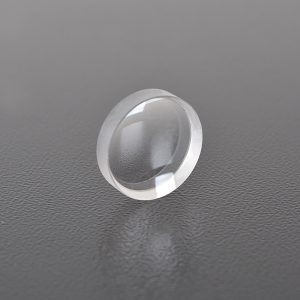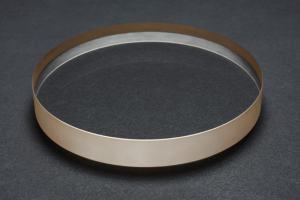
High Temperature Stability Optical Materials
High temperature stability determines the survival of materials in extreme environments. From the thousands of degrees Celsius test of aerospace vehicles to the long-term stable operation of energy equipment, testing technologies such as thermogravimetric analysis and differential scanning calorimetry are driving the continuous innovation of high temperature alloys and ceramic-based composite materials, opening a new era of industrial high temperature resistance.
High temperature stability refers to the ability of materials to maintain their physical, chemical and mechanical properties in high temperature environments. This concept has important application value in materials science, engineering technology and industrial production. With the continuous improvement of modern industry’s requirements for material performance, high temperature stability has become one of the key indicators for evaluating the applicability of materials. This article will discuss in detail the definition, influencing factors, test methods and application fields of high temperature stability.
1. Definition of high temperature stability
High temperature stability usually refers to the ability of materials to maintain their original structure and performance under high temperature conditions. Specifically, materials should have the following characteristics under high temperature environments:
1. Structural stability: The material does not undergo phase change, decomposition or melting at high temperatures, and maintains the integrity of its crystal structure or amorphous structure.
2. Chemical stability: The material is not easy to react chemically with the surrounding environment at high temperatures, such as oxidation and corrosion.
3. Mechanical stability: The material can still maintain a certain strength, hardness and toughness at high temperature, and is not easy to deform or break.
2. Factors affecting high temperature stability
High temperature stability is affected by many factors, mainly including the following aspects:
1. Chemical composition of materials: Different elements and compounds have different stability at high temperatures. For example, ceramic materials usually have high high temperature stability, while some metals are easily oxidized or softened at high temperatures.
2. Crystal structure: The crystal structure of the material has an important influence on its high temperature stability. For example, crystal structures with high melting points and high thermal stability (such as diamond, silicon carbide, etc.) show excellent stability at high temperatures.
3. Microstructure: The microstructure of the material, such as grain size, porosity, etc., also affects its high temperature stability. Fine-grained materials usually have better high temperature strength and creep resistance.
4. Environmental factors: The atmosphere in a high temperature environment (such as oxidizing, reducing, inert, etc.) has a significant effect on the stability of the material. For example, in an oxidizing atmosphere, metal materials are prone to oxidation reactions, resulting in performance degradation.
3. Test methods for high temperature stability
In order to evaluate the high temperature stability of materials, scientists and engineers have developed a variety of test methods, mainly including:
1. Thermogravimetric analysis (TGA): By measuring the mass change of the material at high temperature, its thermal stability and oxidation stability are evaluated.
2. Differential scanning calorimetry (DSC): By measuring the heat change of the material during heating or cooling, its phase change temperature and thermal stability are analyzed.
3. High temperature tensile test: The material is subjected to tensile test in a high temperature environment to evaluate its high temperature strength and ductility.
4. Creep test: Under constant high temperature and stress conditions, the creep deformation of the material is measured to evaluate its long-term high temperature stability.
4. Application fields of high temperature stability
High temperature stability has a wide range of applications in many fields, mainly including:
1. Aerospace: When aerospace vehicles are flying at high speed, the surface temperature can reach thousands of degrees Celsius, so materials with excellent high temperature stability are required, such as high temperature alloys, ceramic matrix composites, etc.
2. Energy industry: In energy fields such as nuclear energy and thermal power, materials need to operate stably for a long time under high temperature, high pressure and corrosive environment, and high temperature stability is a key factor in material selection.
3. Chemical industry: Chemical equipment works in high temperature, high pressure and corrosive medium, and needs to use high temperature resistant and corrosion resistant materials, such as high temperature alloys and ceramics.
4. Electronic industry: Electronic components working in high temperature environment, such as power semiconductors, high temperature sensors, etc., need to use materials with high temperature stability to ensure their performance and reliability.
V. Future Outlook
With the continuous advancement of science and technology, the requirements for high temperature stability of materials will become higher and higher. Future research will focus on the following aspects:
1. Development of new high temperature materials: Develop new materials with higher high temperature stability through nanotechnology, composite material technology and other means.
2. Mechanism research of high temperature stability: In-depth study of the structural changes and performance degradation mechanisms of materials at high temperature to provide theoretical guidance for material design and optimization.
3. Testing technology of high temperature stability: Develop more accurate and efficient high temperature stability testing methods to improve the accuracy and reliability of material performance evaluation.
Conclusion
High temperature stability is an important concept in materials science and is of great significance to the development of modern industry. By deeply studying the influencing factors, test methods and application fields of high temperature stability, we can better design and select materials to meet the needs of high temperature stability in different fields. In the future, with the continuous emergence of new materials and new technologies, the research and application of high temperature stability will usher in a broader development prospect.
Hanzhong Brisun Optics Co., Ltd. Is the high precision optical element manufacturer provides customized production of Various optical lenses, including spherical lens, cylindrical lens, optical window, mirror, prism, filter, metal base mirror and other high-precision optical elements. The base materials include various optical glass, fused quartz, calcium fluoride (CaF2), zinc selenide (ZnSe), germanium (GE), silicon (SI), sapphire, metal and other materials. And provide antireflective film, high reflection film, spectroscopic film, metal film and other optical coatings.
Welcome to OEM and Purchasing!


